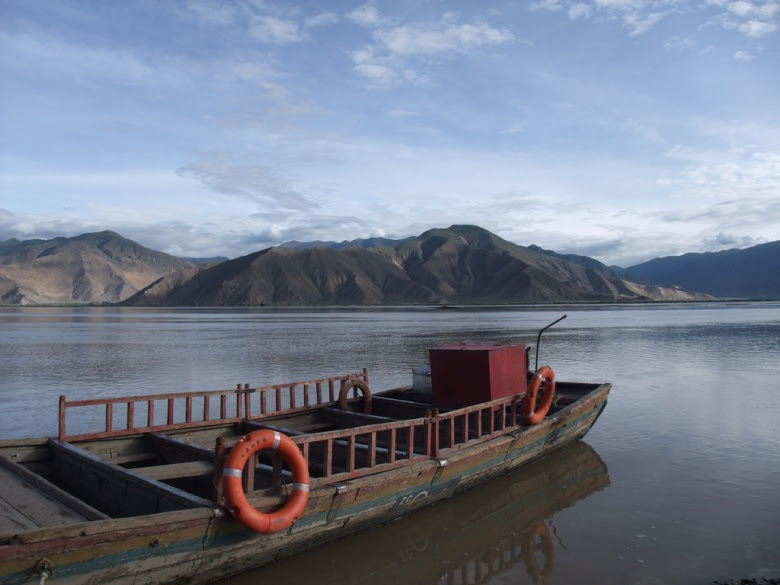
The Brahmaputra is the next test for Beijing and New Delhi.
On April 18–19, the Chinese and Indian defense ministers will meet in Beijing to discuss border issues. At the top of the agenda will be how to improve stability along the border, where both countries have overlapping sovereignty claims. Chinese military incursions across the Line of Actual Control (LAC) into Indian-controlled territory, most recently in March, have been a particular source of tension between Beijing and New Delhi. At the same time, the two sides should not ignore another point of friction in the LAC region—and a potential source of security cooperation—the transboundary Brahmaputra River.
The Brahmaputra originates in Tibet (where it is known locally as the Yarlung Tsangpo), and meanders across the LAC and into the Indian state of Arunachal Pradesh. This is one of two major contested regions along the Sino-Indian border, the other being Aksai Chin to the far west (where most of the recent Chinese military incursions have taken place). Chinese troops conducted a major offensive in Arunachal Pradesh as part of a border conflict with India in 1962, before withdrawing pending negotiations. Beijing claims sovereignty over this territory, which it refers to as “southern Tibet,” while New Delhi regards it as rightfully India’s territory under a 1914 treaty. The river then continues through Indian territory and into Bangladesh, where it ultimately flows into the Bay of Bengal.
Among the world’s major international rivers, the Brahmaputra ranks low in terms of institutionalized management. Countries along the Nile, for instance, have formed the Nile Basin Initiative to encourage peace and security, while states in the lower Mekong region have formed theMekong River Commission (of which China is an observer, but not a full member). By contrast, there is no institution capable of promoting cooperation between the Brahmaputra’s three major riparian states – China, India, and Bangladesh. Even at a bilateral level, China-India cooperation is limited to a modest river data sharing agreement and a joint working group that has apparently not met regularly. The prospects for a larger accord (such as a water sharing treaty) are frustrated by the fact that the river passes through contested territory.
From a security perspective, there are three major challenges for Beijing and New Delhi. These are discussed at length in a new CNA studycoauthored with my colleagues Satu Limaye and Nilanthi Samaranayake that assesses the views and policies of all three riparians. First is the challenge of flood control and prevention. In June 2000, a natural dam on the Chinese-controlled side of the Brahmaputra broke free, leading to a massive flood in Arunachal Pradesh. Thirty Indian nationals were killed, and fifty thousand displaced from their homes. Indian authorities charged that China had withheld vital information that could have improved flood forecasts. This led to a 2002 agreement by which China supplies river flow data to India during flood season (roughly half the year). Yet flooding remains a concern, and may worsen over the long term with the melting of Tibetan glaciers as a result of global warming.
Second are Indian concerns that China might build dams capable of diverting the Yarlung Tsangpo away from India. These concerns have circulated in India for years, most notably in Brahma Chellaney’s writings on the coming Sino-Indian “water wars.” In fact, Chinese academics have considered a variety of river diversion plans focused on alleviating domestic water shortages, including one by a former PLA officer titled Tibet’s Waters Can Save China that received much domestic and international attention. However, other Chinese experts contend that the costs are far too high and the engineering challenges too complex to undertake this feat, and instead argue that there are other, better ways to solve domestic water shortages (such as increasing agricultural efficiency). Moreover, Chinese officials have frequently reiterated that China is building only “run-of-the-river” dams on the Yarlung, with no ability to impound or divert water. Yet in the context of the unending border dispute and low Sino-Indian strategic trust, many in India remain unconvinced of China’s intentions.
Third, Chinese observers are concerned about the ramifications of planned Indian hydropower and other infrastructure development along the Brahmaputra in Arunachal Pradesh. The fear is that this development will strengthen India’s “actual control” over the region by facilitating a large influx of Indian migrants into the contested territory. This would further complicate border negotiations and make it harder for Beijing to ever regain southern Tibet. China has even taken steps to try to complicate Indian development in Arunachal by seeking to deny international financing for these types of projects. Interviews with Chinese experts suggest that Beijing does not have much hope of being able to forever forestall India’s progress in this arena, though the projects themselves will probably continue to be an irritant in broader Sino-Indian political relations.
Taken together, the Brahmaputra presents a mix of challenges that could further aggravate tensions. It is not difficult to imagine a scenario in which control over the river becomes bound up with a larger border conflict. Water, after all, is a strategic resource and vital to sustaining military forces in the region. Yet there are also several ways in which the two sides can work together to stabilize the LAC region by jointly addressing river issues.
At a minimum, China and India could work closely to address the risks of flooding. For instance, the two militaries might organize combined exercises based on a flooding scenario. This could build on a recent precedent of combined China-India military drills in the border region focused on disaster relief. Chinese and Indian civilian ministries might also join forces to discuss how flood control measures in the region might be strengthened, and exchange information on other topics of mutual concern, such as river safety and pollution mitigation. Although this type of cooperation will not resolve underlying tensions related to the border dispute, it could build trust at a low level and strengthen both sides’ capacity to respond to emergencies.












